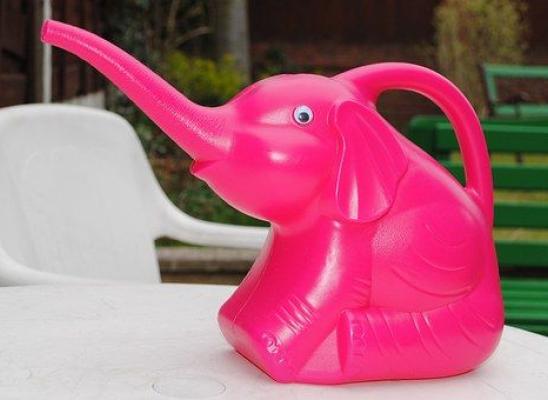Making the Case for Schema Therapy for Trichotillomania

Online test
Find out the severity of your symptoms with this free online test
When it comes to mental health disorders, one thing is true: while there are specific diagnostic criteria used to make a diagnosis, how those behaviors and traits are manifested can vary quite a bit. Rarely is a diagnosis a “one-size-fits-all.” Trichotillomania, or hair pulling, is no exception. Hair pulling behavior does not look the same from person to person. There are individual differences and variations in pulling behaviors. In fact, research has looked at how people engage in hair pulling and, it turns out that there is not a single type of hair pulling, but rather distinct subtypes of hair-pulling:
Subtype 1: Sensory-sensitive Pullers
This subtype is characterized by highly focused pulling behavior. The pulling tends to be very intentional. Urges to pull tend to be infrequent, and not particularly intense. The frequency of pulling tends to be lower than in other subtypes.
Individuals in this subtype score high in sensory sensitivity. Sensory sensitivity refers to how aware someone is of their sensory input: sight, sound, taste, smell, touch, and pain. Highly sensitive individuals tend to react strongly when something is highly stimulating. There is a moderate disturbance in mood. Impairment due to the pulling is moderate.
Subtype 2: Low Awareness Pullers
With this subtype, individuals tend to engage in automatic pulling. Their pulling is more often the result of emotional triggers while urges to pull are generally low. Some degree of impairment is present.
While they may sometimes experience some disturbance in mood, people with this subtype tend to present with symptoms of ADHD and a degree of impulsivity.
Subtype 3: Impulsive/Perfectionist Pullers
Pulling behavior for this subtype is driven by a need to control unpleasant emotions. These individuals experience uncontrollable urges to pull. Distress tolerance, the capacity to cope with negative emotional or other aversive situations, is poor and they can be easily overwhelmed.
People with this subtype of TTM tend to present with high degrees of both perfectionism and impulsivity. There is significant mood disturbance and impairment.
The presence of TTM subtypes suggests that each type of pulling behavior, and each individual, has a unique combination of traits that may respond differently to various treatment approaches. A recent study suggests that these traits may be due to early maladaptive schemas (EMS) and understanding which EMS is associated with subtypes may support the use of schema therapy for treating body-focused repetitive behaviors (BFRB).
What is A Schema?
A schema is a cognitive structure that is essentially a collection of a person’s basic knowledge about some entity or situation, including its qualities and relationships between these. It influences a person’s perception, interpretation, imagination, and problem-solving. A cognitive schema shapes the outlook or assumptions that a person has of the self, others, or the world that endures despite objective reality. This last point is important to note. A schema can persist even when reality does not support it. This can lead to a disconnect between one’s perceptions and reality. These schemas are known as maladaptive schemas. Maladaptive simply means that something doesn’t adjust or adapt to certain situations well.
Schema theory holds that early maladaptive schema (EMS) develops when basic psychological needs of childhood are not met. Those early needs include secure attachment, autonomy, realistic limits, self-directedness, and playfulness. These EMS are essentially trait-like characteristics that develop in response to early childhood experiences. They are broad, pervasive, dysfunctional patterns of memories, emotions, thoughts, feelings, and attributions that develop over time and carry through into adulthood.
Viewing hair pulling through the lens of schema theory, the maladaptive behaviors of hair pulling develop as a result of the triggering of EMS from traumatic or toxic early childhood experiences. These experiences serve as a framework or “schema” for the development of traits and behaviors to cope, in the case of TTM, hair pulling. When the EMS is triggered, a person may respond with maladaptive coping behaviors such as compensation, avoidance, or surrender. Understanding a person’s EMS and how it is related to their hair pulling can help to guide treatment.
Types of Early Maladaptive Schemas
There are eighteen identified early maladaptive schemas that are categorized into five domains. Each of these domains represents the five broad categories of emotional needs of a child: connection, mutuality, reciprocity, flow, and autonomy. When these needs go unmet, it can lead to the development of schemas that result in unhealthy, maladaptive behaviors.
Disconnection and rejection
- Abandonment/instability
- Mistrust/abuse
- Emotional deprivation
- Defectiveness/shame
- Social Isolation/alienation
Impaired autonomy and performance
- Dependence/incompetence
- Vulnerability to harm or illness
- Enmeshment/underdeveloped self
- Failure
Impaired limits
- Entitlement/grandiosity
- Insufficient self-control/self-discipline
Other directedness
- Subjugation
- Self-sacrifice
- Approval-seeking/recognition-seeking
Over vigilance and inhibition
- Negativity/pessimism
- Overcontrol/emotional inhibition
- Unrelenting standards/hyper criticalness
- Punitiveness
Not every person will have difficulty in every area. Each person develops their own schema based on their individual experiences.
Early Maladaptive Schemas and BFRBs
Researchers have taken a closer look at the role of EMS in BFRBs. What they’ve found is that certain EMS may play a role in the development or perpetuation of behaviors such as hair pulling or skin picking.
One study that has looked specifically at the possible influence of EMS on skin picking found that the subtypes of skin picking were each associated with common EMS. Higher dependence/Incompetence EMS was a predictor for both the automatic and focused subtypes. Lower emotional derivation was associated with all three subtypes.
Higher approval/Recognition Seeking was a specific predictor for the automatic subtype. Higher mistrust/Abuse, Lower social isolation/Alienation and Enmeshment/Undeveloped self were specific predictors for the focused subtype. Higher Failure to Achieve and male gender were predictive of the mixed subtype.
While this study focused specifically on the relationship between EMS and skin picking, it may have implications for hair pulling as well. Researchers have found that hair pulling and skin picking often co-occur and share a number of similarities including clinical characteristics and overlapping risk factors. It has also been suggested that the two disorders likely share similar origins.
Schema-Focused Therapy for BFRBs
These findings suggest that specific EMS are associated with skin picking and possibly other BFRBs. They highlight the possibility that schema therapy may be an option for tailoring treatment to the unique needs of the person.
Schema-focused Therapy is an integrated approach to treatment that combines key elements of cognitive-behavioral therapy (CBT), experiential therapy, interpersonal therapy, and psychoanalytic therapies into one unified approach to treatment. It is a highly effective therapeutic approach that helps people change their maladaptive patterns of coping, opening the way for more positive, effective ways of coping.
Currently, Habit Reversal Training (HRT) is the most often used treatment approach for hair pulling and other BFRBs. HRT requires the person to focus on the behavior or urge by resistance, avoidance of competing for a response. While effective at least in the short-term, over time, this can be quite challenging, especially if urges are particularly intense. Schema-focused therapy may offer an alternative to focusing on the maladaptive coping behavior, in this case, hair pulling and focus on changing the thought patterns associated with the response.
If EMS indeed plays a role in perpetuating behaviors such as hair pulling or skin picking, then changing the schema may indeed result in healthier coping responses. Clearly, much more research is needed but schema theory and schema-focused therapy may offer hope and hold promise for more targeted treatment options for people living with BFRBs. As always, work with your treatment team to find the treatment option that is best for your needs.
References
1. Pozza, A., Albert, U. & Dèttore, D. (2020). Early maladaptive schemas as common and specific predictors of skin picking subtypes. BMC Psychol 8, 27. https://doi.org/10.1186/s40359-020-0392-y
2. American Psychological Association. (n.d.). Schema - APA dictionary of psychology. APA Dictionary of Psychology. https://dictionary.apa.org/schema
3. Young JE, Klosko JS, Weishaar ME. (2003). Schema therapy: a practitioner’s guide. New York: Guilford Press. https://www.guilford.com/books/Schema-Therapy/Young-Klosko-Weishaar/9781593853723/contents
4. Snorrason, I., Belleau, E. L., & Woods, D. W. (2012). How related are hair-pulling disorders (trichotillomania) and skin picking disorder? A review of the evidence for comorbidity, similarities, and shared etiology. Clinical Psychology Review, 32(7), 618-629. https://doi.org/10.1016/j.cpr.2012.05.008
Online test
Find out the severity of your symptoms with this free online test
Start your journey with TrichStop
Take control of your life and find freedom from hair pulling through professional therapy and evidence-based behavioral techniques.
Start Now




